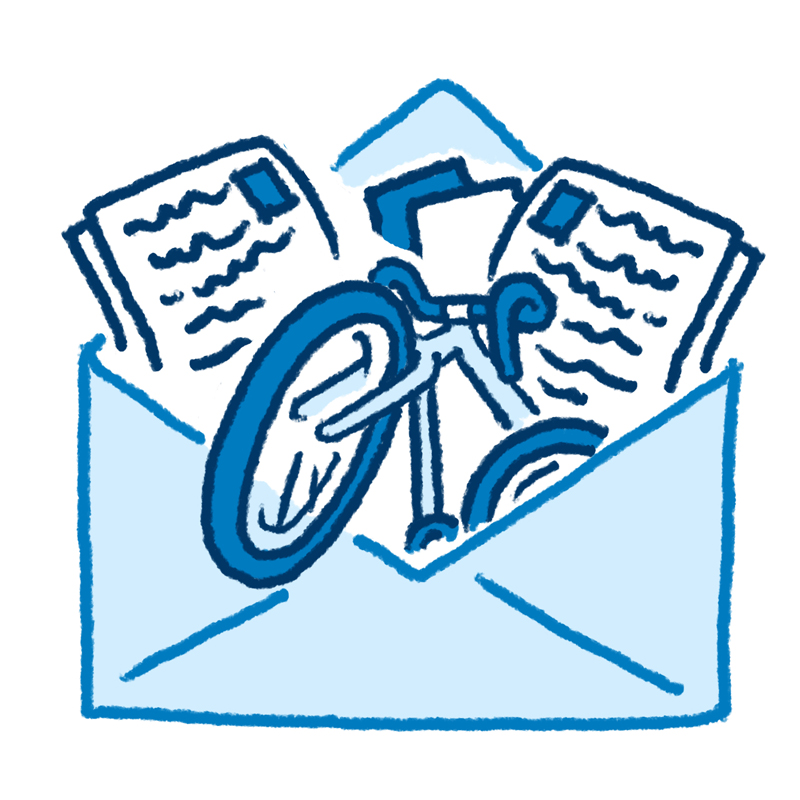Camping Tips for Bikepacking
Sleeping under the stars in a beautiful place, one that you reached under your own power, can be one of the biggest joys of bikepacking. If you’re new to camping it might seem like a lot to figure out, but with a little practice it can become a familiar routine.
Choosing a Campsite
A good campsite is key to enjoying your evening, getting a good night’s sleep, and waking up feeling rested and recovered the next morning. Here’s what to look for.
Developed Campgrounds: Look for tent sites that won’t be surrounded by RVs, and avoid the sites next to and downwind of the restrooms.
Primitive Campgrounds: You’ll find primitive campgrounds throughout public land like US National Forests. They may be free or cheap (bring cash in small denominations) and may lack amenities like water or bathrooms. On busy weekends you’ll find them mostly populated with RVs.

Wild Camping: In areas like National Forests where dispersed camping is legal, you’re free to camp almost anywhere as long as you follow Leave No Trace principles. This type of camping is ideal for getting away from vehicles and enjoying solitude.
- If you’d like to avoid being seen from the road, look for sites hidden behind a rise, uphill from the road, or on the insides of curves where headlights won’t reach you.
- Avoid camping on private land, or if you must, ask for permission first.
- If you find yourself needing to “stealth camp” somewhere you’d rather not be noticed, make camp just before dark, leave around sunrise, and minimize light usage at night.
Whatever type of camping you’re doing, a great site is one that is:
- Flat and not likely to turn into a puddle if rain is expected
- Near a water source, though ideally not within 100 feet (camping too close to water pollutes the source and disturbs animals who come to drink).
- Previously used, or at least on a durable surface like dirt instead of delicate foliage
- Sheltered from wind
- Not in the bottom of a ravine or canyon in cold weather, as cold air tends to sink into these places overnight
- Not underneath dead branches or trees that could fall on your campsite
Camp Hygiene
It’s totally normal for hygiene standards to slip a bit while bikepacking. However, it’s important to keep certain personal areas clean to avoid saddle sores, urinary tract infections, and other unpleasant problems.
Change Clothes
As soon as you get to camp, change out of your cycling shorts and into something dry and breathable.

Wash Yourself
As you’re changing, give yourself a backcountry shower. Splash off your face, underarms, and especially your crotch and saddle areas; a squirt water bottle works well for this. Some people bring a little bottle of biodegradable soap or carry hygiene wipes. Wash at least 100 feet from natural water sources to avoid polluting them.
Wash Your Shorts
When you change out of your cycling shorts at camp, clean them so they’re ready for the next day. If you don’t have enough water for a full wash, at least rinse out the chamois and leave it to dry overnight. Many cyclists bring two pairs so they can let one dry the next day while wearing the other. Let your chamois dry thoroughly, ideally in sunlight, as often as possible to prevent bacteria growth.
Going to the Bathroom
If camping is new for you and there’s no restroom at your site, you might be wondering how this bathroom thing is supposed to work. Let’s dispel the mystery.
To urinate, simply walk away from your campsite and any water sources and find a private place to go. Women will probably want to squat down. A squirt from a water bottle works well to clean yourself or you can bring toilet paper.
For solid waste, walk at least 200 feet from any water sources and dig a “cat hole” at least 8 inches deep using a rock, stick, or camping trowel. Squat down, do your business, then fill in the hole. The goal is to make it difficult for an animal to dig up or an unsuspecting camp mate to step in. Don’t forget to wash your hands with soap and water or sanitize with hand sanitizer.
Whatever you do, pack out all used toilet paper in a ziplock bag. Yes, really! Even if buried, it has a tendency to become unburied as animals dig it up or rain washes soil away, and nothing spoils a pristine place faster than used TP.
Washing Dishes
First, clean dishes by eating as much of the food scraps as you can. You carried all your food there, after all, so make the most of it! Then walk at least 200 feet away from your campsite and from water sources to rinse your dishes. You can even drink the rinse water if it’s palatable — it’s extra calories and very Leave No Trace friendly. Otherwise, disperse the rinse water over a wide area or dig a hole and bury it. Some people use a small amount of biodegradable soap for dishes, but it’s not strictly necessary.

Food and Wild Animals
Never feed wildlife. Even small, cute creatures like birds, squirrels, and mice will become aggressive towards future campers if they learn humans are a source of food. Remember that a “cute photo op” for you may lead to another camper’s nightmare or worse: every year, animals are killed by local authorities because they’ve become too aggressive towards humans. Keep animals and people safe by not feeding wildlife.
Dispose of food and packaging in proper campground receptacles or pack it out with you. Never litter or leave food bits around: it’s unsightly as well as dangerous to wildlife.
Avoid pests by keeping your campsite tidy and your food items all in one place. Most cyclists have a designated “food bag” that they keep in plain view during their evening meal and then inside their tent at night (unless you’re in bear country!). Don’t forget to check your stem bags or other snack spots for wrappers and half-eaten snacks before packing up the food at night.
Enjoy Campfires Responsibly
As wildfires grow increasingly common, many areas are imposing fire restrictions to make sure unsuspecting campers don’t accidentally set fire to the forest. Usually canister stoves are allowed for cooking, but alcohol or solid fuel stoves without shutoff valves may be off-limits if strict fire rules are in effect.
If you do make a legal campfire for cooking, warmth, or ambiance, do your best to minimize impact to the site and reduce risk of your fire growing out of control. Use an existing ring or build your fire on a durable surface like dirt or rock, and only gather wood if there is plenty to be found from fallen or dead trees. Never leave a fire unattended, and make sure it’s completely, 100% extinguished before going to bed.


